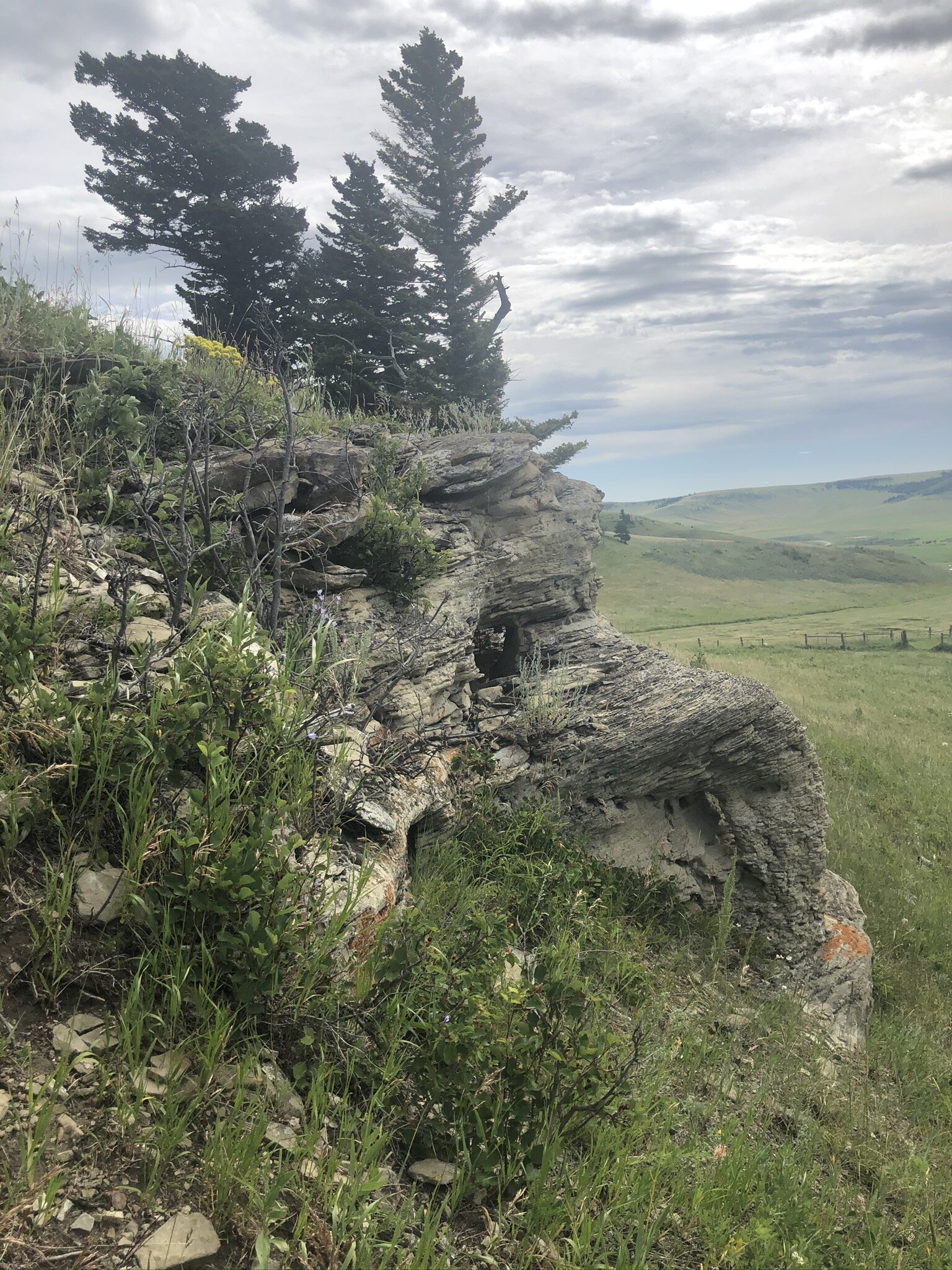Our Ranch Ecosystem - A MULTISAR Study
Not just cattle! Our ranch ecosystem is home to 26 Species at Risk
In 2020 Burke Creek Ranch partnered with MULTISAR, a collaboration funded by environmental stakeholders such as Alberta Conservation, Alberta Environment and Parks, Canadian Roundtable for Sustainable Beef, and several others. MULTISAR provides funding to study the native prairie ecosystems and then prepare habitat and species at risk conservation strategies for partnering ranchers. The goal is to maintain, and or further improve the health of native rangelands. Even conscientious ranchers can learn something from these studies.
Healthy Native Rangelands Provide Essential Services to our Ecosystem
These absolutely essential services include water storage and purification, forage production, soil protection, carbon storage, nutrient recycling and all of this provides a habitat for diverse plant and wildlife communities.
The MULTISAR approach at our ranch broke the study into 3 programs: Rangeland health, Riparian (wetland) areas, and a thorough Wildlife species study. They spent over 9 months on this study, and came back with a very thorough and detailed report on their findings, and suggested management strategies we could employ to further enhance the environmental conditions. Should funding remain MULTISAR will return in 5 years to do the study again for both research purposes, as well to see how their suggestions affected the wildlife, range and riparian health.
Burke Creek Ranch, home to at least 26 Species at Risk
Beyond miles of groundwork the wildlife study deployed song-meters, day and night cams, and water studies. Going into the study, MULTISAR knew that our area is a key wildlife biodiversity area and that it falls within the Grizzly Bear Support Zone. But what they found even surprised the wildlife biologists! The report came back with 147 distinct species, which they reported was the highest species list they had ever studied one one location in Southern Alberta. 26 of these species are considered species at risk (SAR) while 3 of the SARs are considered Endangered: Grizzly Bear, Little Brown Bat and Ferruginous Hawk. Additionally they documented 3 threatened SAR, and 3 more of special concern, including the Golden Eagle and Sharp tailed Grouse.
Of particular interest to the biologists was the owls. In addition to the Great Horned Owl, they also discovered Boreal Owls, which are not typical or expected outside of the Rockies.
The biologists also had the opportunity to discover 2 Sharp tailed grouse leks. A Lek, is a communal dancing ground used during the spring mating season. Each of these Leks had a dozen grouse performing mating dance rituals. Overall the wildlife biologists were “very impressed with the biodiversity” and stated:
“It takes good land stewardship to provide habitat to this level of wildlife statistics”
The Range study measured plant diversity, site stability (risk or level of erosion), the measured level of “plant litter” (dead plant material that provides cover to soil, and provides organic material that decomposes and adds to soil health) and the presence of invasive and noxious weeks. They also looked at the presence of rare plant species, and were pleased to find such a large population of the endangered tree species “Limber Pine”. They identified not only mature Limber Pine species but also extensive regeneration of new growth.
Finally the Riparian study looked at the health of our creeks and streams, and the plant and wildlife species in these locations. They noted we already avoid direct animal contact with the streams in most situations, but provided strategies to support this. In one particular area we are working on more Willow regrowth, and will utilize electric fence and a portable water trough to support further limit animal contact.
Additional learnings from the study were as we repair and replace fence we can implement wildlife friendly design, which puts a smooth wire on both the bottom and top strand. We are also now equipping water troughs with little ramps for small wildlife to escape, and further implementing electric fence to protect sensitive water courses.
We were grateful for the opportunity to partner and provide mutual educational opportunities to both us the ranchers, and the environmental specialists, and look forward to both implementing modifications to our practices as well as measuring change when MULTISAR returns in 5 years. In summary we take our role as stewards of these native foothills seriously!
Limber Pine on Burke Creek Ranch, home to Clark’s Nutcracker






